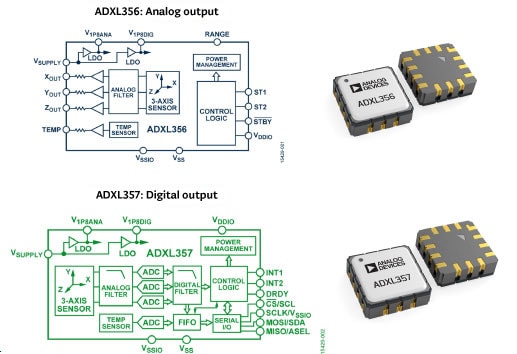
- Semiconductor Technology Now
Report Series
The technology for making sensors at very low cost was actually pioneered with the iPhone. Sensors are used to change the orientation of the screen from top-to-bottom to left-to-right, or to collect healthcare data like a pedometer, altimeter, or other device. To improve the recognition accuracy of the voice recognition module, three MEMS microphones are used per iPhone for noise canceling. However, the major semiconductor manufacturers in Japan had an aversion to MEMS and opted not to enter this market. The only analog semiconductor maker in Japan, New Japan Radio, produces 100 million MEMS microphones a year. The reason that MEMS sensors are being produced in such high volume and can be sold at a low cost is because they are used in iPhones. Figure 5 shows an example of a MEMS microphone.
Analog circuits and filter circuits that acquire and amplify the signals from these types of sensors, as well as A-D converters and other analog circuits, are necessary for digitalization. There are products that output the raw signals from MEMS in analog form, and products that perform digital conversion and then output (Fig. 6). Here is an area where Japan’s electronics manufacturers can thrive.
 |
After the data is collected from the sensor, it is digitalized and saved, and then it is converted into meaningful information through processing such as correlation analysis*4 and multivariate analysis*5. Traditionally, data processing of this kind was checked by formulating a model and using it to check the actual results with a simulation model, and any deviations would have been compensated with general empirical values. Recently, AI (machine learning or deep learning) is used to monitor sensor data. This generates an enormous amount of data over time, but by defining this data as the normal trend, any data that deviates from this pattern can be judged as abnormal.
Good people create good AI
These decisions may appear as though the computer were doing so on its own accord. But in reality, humans are the ones teaching the computer what is normal and not normal. In other words, while digitalization is said to make computers an autonomous system, humans still have to do the teaching. There have been negative opinions that the introduction of AI and digitalization will take work away from humans. Unfortunately, humans are the ones who control AI.
It should be noted that just as every person is different, so is AI. This is because the knowledge of AI depends on what is being taught. So if humans teach AI harmful things, the AI will become harmful. If good things are taught, such as things that are helpful to society and bring happiness to humans, then AI will not become harmful to humans. In the final installment, we will consider another aspect of digitalization, uberization.
Footnotes
- *4
- Correlation analysis: A method of analysis that describes the relationship between two variables. For example, given the Japanese proverb “when the wind blows the bucket-makers will prosper,” a correlation analysis would show a quantitative analysis between wind speed and the bucket-maker’s sales. There are many variations that explain this proverb with humor, but the gist is that the blowing wind generates a chain reaction of events that results in increased demand for buckets.
- *5
- Multivariate analysis: A method of using statistical techniques to analyze data made up of multiple variables. This is used to analyze data from multiple sensors, such as for temperature, acceleration, humidity, and pressure.
Writer
Kenji Tsuda
International technology journalist, technology analyst
Kenji Tsuda is a freelance technology journalist who writes both in English and Japanese. With over 30 years of work experience covering the semiconductor industry, Tsuda has been offering various insights to the industry through his blog (newsandchips.com) and analytical articles. He is editor in chief of the Semiconportal site (www.semiconportal.com) and writes the “Car Electronics” article series for Mynavi News site as a columnist.
Tsuda started his career as a semiconductor device development engineer, before becoming a reporter for the Nikkei Electronics magazine at Nikkei McGraw-Hill (now Nikkei BP). At the company, he created several magazines including Nikkei Microdevices (in Japanese), Nikkei Electronics Asia, Electronic Business Japan, and Design News Japan (in English), and Semiconductor International Japanese Edition. Tsuda went freelance in June 2007 as an international technology journalist. Books he authored in Japanese include Megatrend in Semiconductors 2014-2023 (Nikkei BP), Why We Shouldn’t Let Go of the Semiconductor Industry (Nikkan Kogyo Shimbun, Ltd.), The Truth about the European Fabless Semiconductor Industry (Nikkan Kogyo Shimbun, Ltd.), The Latest Trends in Green Semiconductor Technology and New Businesses 2011 (Impress Corp.).



















